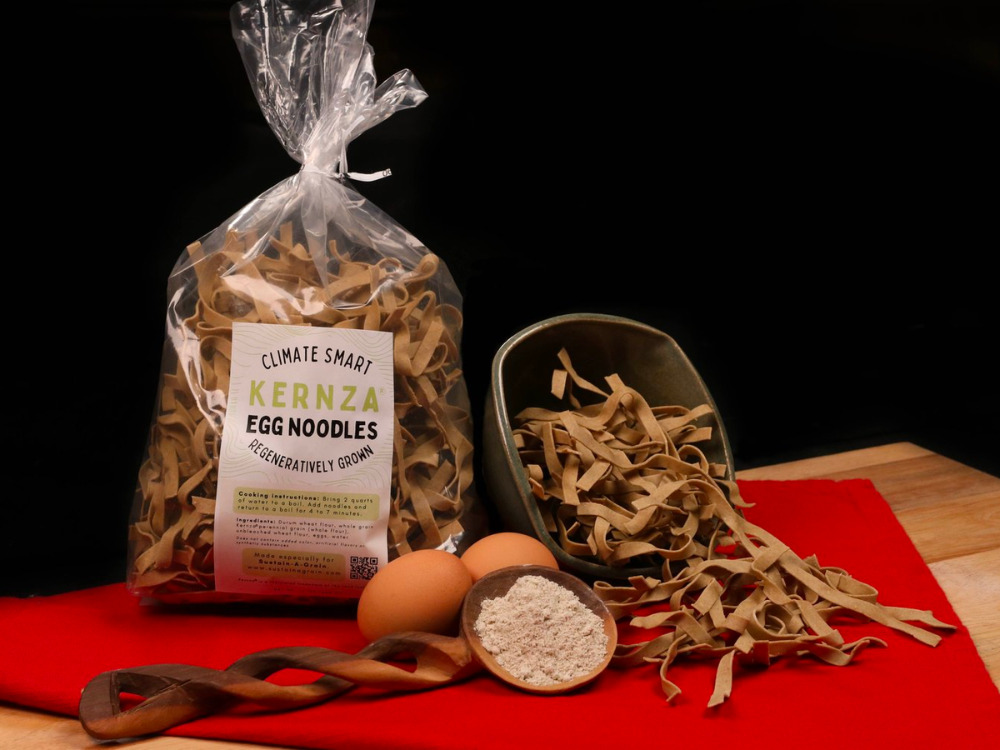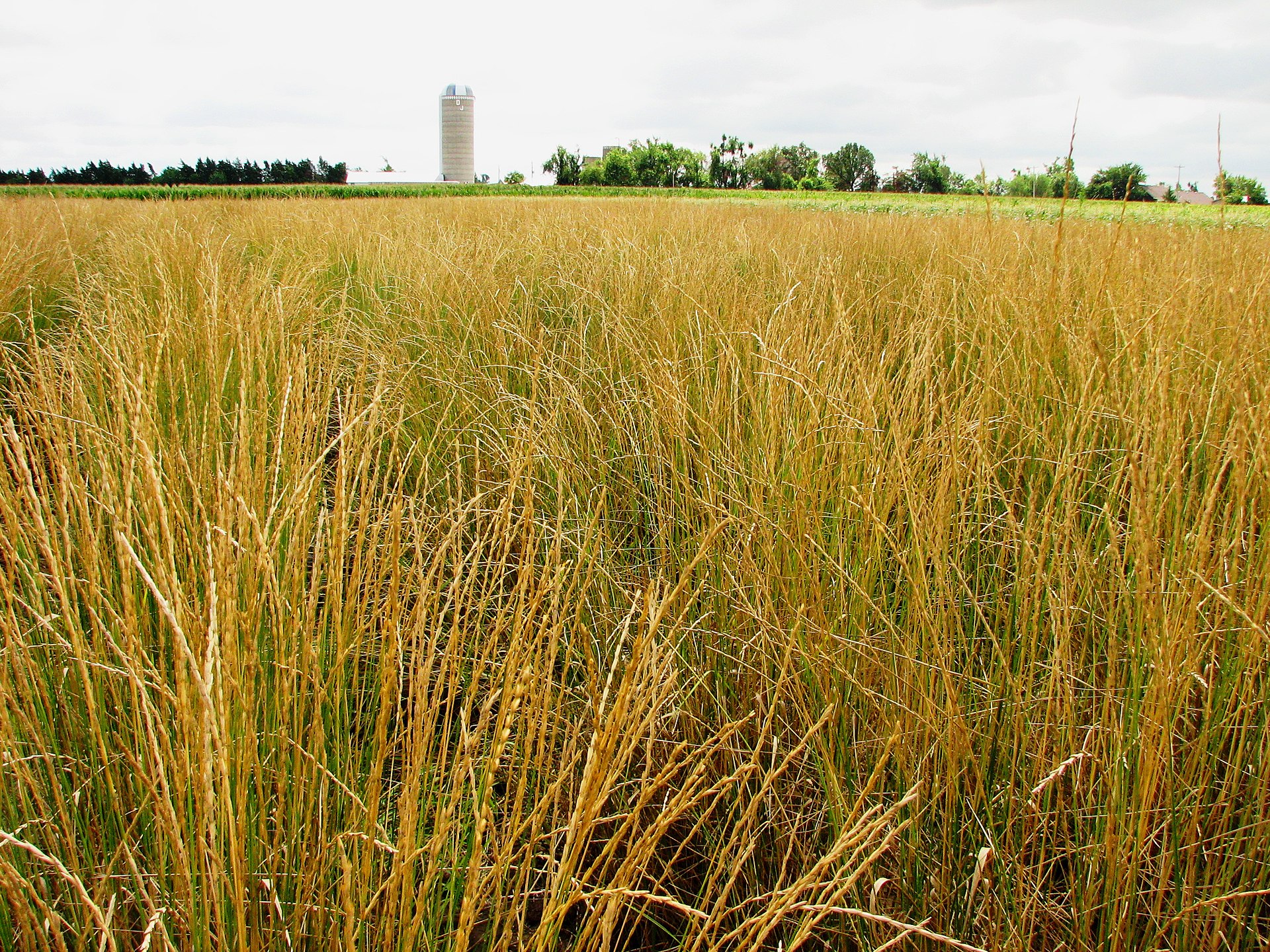Peter Miller co-founded Sustain-A-Grain, a Kansas-based company commercializing perennial grains. He’s now looking for his next opportunity in sustainable agriculture. The views expressed in this guest article do not necessarily represent those of AgFunderNews.
The Midwest has lost one third of all topsoil since intensive farming began in the 1850s. Some experts argue that in 60 more years, this rich farmland in the United States will be completely devoid of usable topsoil.
Traditional annual agriculture, which relies upon tilling, can be improved significantly by no-till agriculture and cover-cropping practices. However, it still requires annual planting and machinery passes on the soil. Bolder solutions need to be developed to improve traditional farming, and perennial grains are emerging as a promising strategy for reducing the dramatic effects of our current farming approach.
Kernza: leading the perennial revolution
Kernza was developed with a simple but radical idea: perhaps our key staple grains could be made perennial, changing some of the fundamental challenges we’ve come to accept from the current system.
Kernza was developed by breeding a traditional forage called intermediate wheatgrass (Thinopyrum intermedium) over several decades to improve the size of the grain to its (still small) current state – effectively taking the grain from the size of sesame seeds to wild rice. Farmers who plant Kernza can harvest the grain for years without additional tillage or planting. They can graze it over the winter and still produce a grain crop in the summer. They can eliminate multiple tractor passes and reduce their overall cost of production. Kernza’s roots extend over 10 feet below ground. This impressive depth helps keep soil in place and helps improve water quality and filtration.
Global advancements in perennial grains
Nearly 50 years on from that development, perennial rice, sorghum, wheat, oilseeds, and legumes are making significant gains in both research and in practice worldwide. Research entities such as the University of Minnesota, Colorado State University, and USDA-Agricultural Research Service are engaging in this work, as is the private sector, including Sustain-A-Grain (a company I co-founded).
Farmers are also deeply involved as the agronomy and adaptation of these new varieties require experimentation. Major research efforts are underway across Europe, Australia, Russia, and several African countries, including Uganda, South Africa, Kenya, and Mali. And in China, perennial rice has already been commercialized since 2018, with nearly 45,000 Chinese smallholder farmers that grew it in 2021.

Investment needs for a perennial future
For the United States to continue leading innovation for perennial cropping systems, significant investment is needed in three key areas: (1) plant breeding and agronomy, (2) supply chain development, and (3) food science.
Plant breeding and agronomy
Perennial agriculture accounts for 0.25% of US public investment in agricultural research and development. Kernza provides a 20 percent yield improvement per breeding cycle compared to non-perennial wheatgrass, and there is an opportunity to improve rates with further breeding.
Investment is also needed in agronomic innovation across various farming systems and environments, particularly with extension and education activities for sharing information and practices across farmer networks. One major area of research requiring acceleration is the need to better understand the environmental co-benefits of perennial grains beyond reducing soil erosion and increasing water filtration. Work is underway to quantify benefits such as carbon sequestration, but additional research could deepen our understanding of these co-benefits and look at effects on beneficial biodiversity.
Supply chain development
New crops like Kernza require alternative routes to move product from farm to table. For example, Kernza competes for slots at a dwindling number of specialty mills around the country, which also process other niche small grains, and there is not enough milling capacity to meet the consumer demand for Kernza and these other minor crops in a timely way. Supply chain infrastructure, such as grain storage and transportation, to accommodate and differentiate Kernza will require additional public and private sector investments.
Food science
Further food science research on the properties of perennial grains is needed. Basic nutritional information about Kernza is available, but unlike major commodities, the performance and utility of the grain, basic processed forms, and byproducts are unknown among food and beverage companies that may be interested in adopting it. This information would make it easier for recipe development, to accentuate Kernza’s unique nutty and sweet flavors, and understand Kernza’s nutritional benefits.
The private sector is unlikely to invest in this information, and if they do, they will be unlikely to share it with competitors, slowing the development and scale-up of perennial-inclusive food products.
Private-sector companies who share a vision for a more sustainable agricultural system must invest in utilizing new crops, like Kernza, in their existing recipes and new products. Food products need not be 100 percent Kernza to grow demand and shift production patterns. Users of Kernza have found they can substitute Kernza for wheat in small amounts without affecting recipe outcomes, which could generate meaningful volumes for farmers looking to sell grain.
However, new recipes and products are also needed. We have seen that branded Kernza products can generate consumer excitement. In 2022, Whole Foods named Kernza one of the year’s top 10 food trends. General Mills offers a Kernza cereal, Patagonia Provisions is collaborating with some of the nation’s top craft brewers on Kernza beers, and Kodiak’s Kernza pancake mix is available on grocery store shelves.
Public-sector resources can drive a race to the top to develop novel, delicious recipes that contain perennial grains, pulses, and oilseeds as they come online. Still, until then, sustainability frontrunners in the private sector can and should invest more in their test kitchens to see what these ingredients can do.

Setting the record straight
There’s a common perception that “perennial grains won’t feed the world.” While it’s true that perennial grains, in their current state, do not yield the most calories per acre, it’s essential to consider the broader picture:
- Yield: Kernza yields are improving by 20 percent per breeding cycle. Global annual wheat yields have improved by 1.6 percent on average since 1961. (And wheat production is projected to be negatively impacted by climate change, driven by drought, high overnight temperatures, and severe rain events, potentially negating yield gains and eventually leading to average yield declines.) Plant breeders I speak with believe that within 15 years, if research is properly funded, Kernza yields will be comparable to other small grains. Perennial rice yields have already overtaken annual rice!
- Potential: Kernza’s morphology suggests a higher potential yield than most other small grains. Intermediate wheatgrass heads contain significantly more spikelets (the grain producing parts of the plant) than do wheat heads. It will take significant breeding to fully explore this potential but by starting with more grain-producing components, Kernza has a much higher theoretical yield limit.
- Risk mitigation: Perennial grains can reduce risk in many ways, but there are two that should be top of mind:
- Establishment risk: As climate change makes weather patterns less predictable, getting equipment into the field each year to plant at the right time becomes more difficult. If a crop is already in the ground, it matters much less if the field was too wet or too dry during the optimal planting window. Having a crop already in the ground is a big advantage.
- Genetic vulnerability: Crop diversity is one of the best ways that we can mitigate the risk of enormous crop failures. Climate change is increasing our risk of insect pest infestations and unpredictable weather patterns, both of which can devastate homogenous crop landscapes. By cultivating a diverse range of crops with varying genetic traits, we can ensure that some crops will remain resistant to specific pests or adverse weather conditions. This genetic diversity acts as a safety net, preventing total losses and promoting agricultural resilience in the face of changing environmental conditions.
A historical perspective and the path forward
Another frequent response to the idea that perennial grains can become major crops is cynicism: “Big Ag won’t let that happen” or “That’s impossible.” Those are responses that aren’t based on historical precedent. Agriculture has seen massive, rapid changes in cropping systems. Soybeans were grown as a forage for over 150 years in the United States before becoming recognized for their modern potential in the 1920s. In a few short decades, soy went from an unknown forage to America’s second largest cash crop.
Transitioning to perennial grains like Kernza presents a tangible solution to current agricultural challenges. The results are promising, but for these grains to have a significant impact on a global scale, increased investment in research, supply chain development, and food science is critical. It’s not just about changing crops; it’s about reshaping our approach to sustainable agriculture for the long term.




